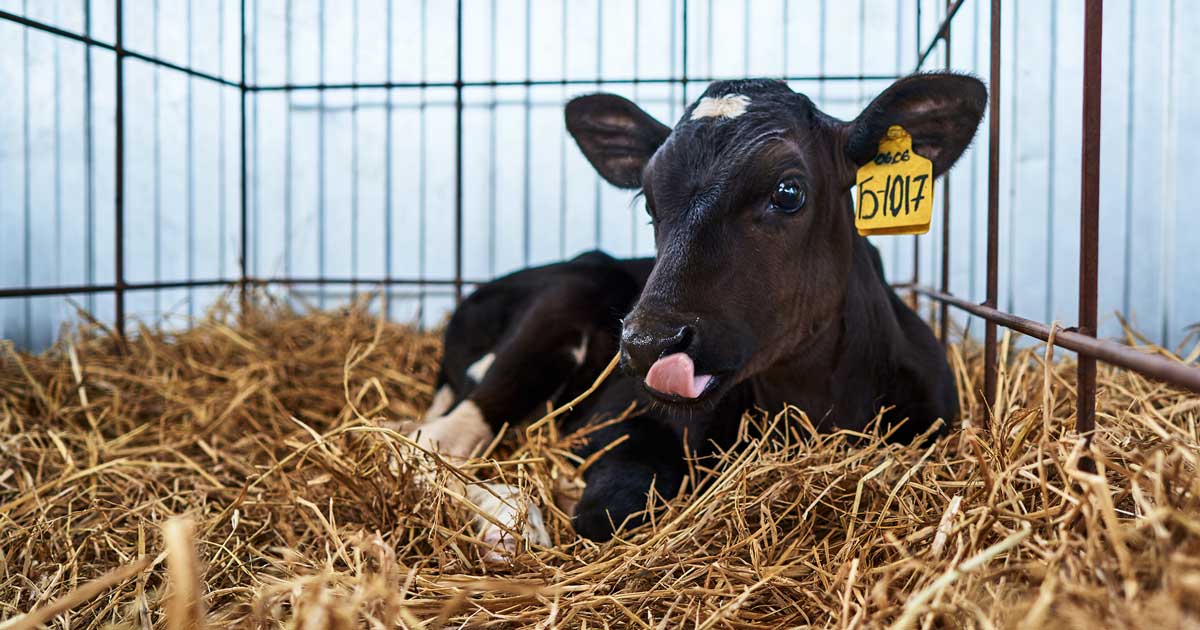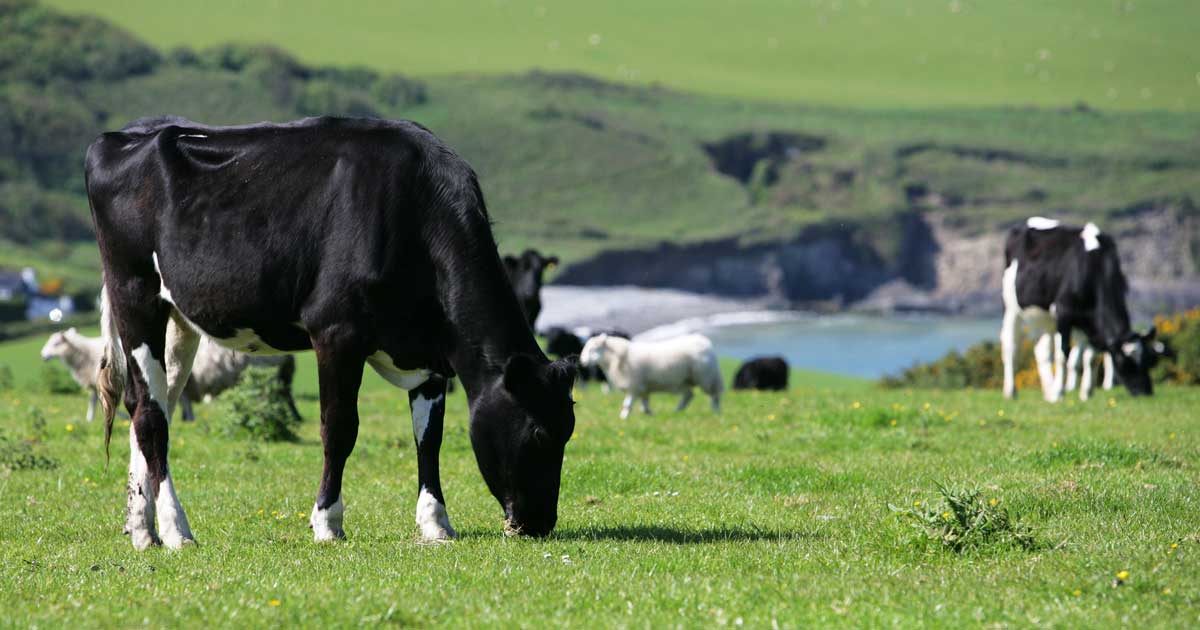22 Sept 2021
How practical support can help engage farmers on BVD factors
Beckie Harrison runs through how to talk about BVD and supporting farmers afterwards.

A third of farmers reported suffering a bovine viral diarrhoea impact, with high level of disease in calves and poor fertility listed as the most common problems. Image: © Alexander Lupin / Adobe Stock
Bovine viral diarrhoea (BVD) is a well-understood disease. As vets, we know that regular testing, along with prompt removal of persistently infected (PI) animals and the use of vaccines, can effectively prevent the disease spreading – both within and between herds.
However, despite wider awareness increasing in the past few years, sustained engagement with farmers on the topic of BVD remains a challenge.
It seems this is largely because it is a disease they cannot see, so it often drops to the bottom of the priority list when other factors with more visible impacts on herd health and productivity are at play. It can be particularly challenging to ensure the removal of PI animals from herds, as although often stunted as calves and labelled as “poor doers”, many PIs appear completely healthy and can go on to produce further PI calves.
From the farmer’s perspective, it can seem financially counterintuitive to cull an apparently “normal” animal. These animals represent a real danger in controlling the spread of BVD across the national herd, as concern surrounds them being sold through markets – even after they have been identified as PIs.

Eradication schemes
Voluntary eradication schemes are in place, such as BVDFree England and a scheme in Wales, which aim to reduce BVD in the national herd through increased awareness and education.
In contrast to most of the rest of the UK and the Republic of Ireland, England does not have mandatory testing for BVD. However, this is set to change in 2023, where joining an eradication scheme will become compulsory for farms that are Red Tractor assured.
Westpoint Farm Vets has taken advantage of the Defra-funded “BVD Stamp it Out” scheme to encourage both dairy and beef farms to engage with BVD control. In addition to assessing herds for active BVD infection, usually through a youngstock antibody check test, this process includes multiple conversations between the farmer and vet about the disease aetiology and control, and how it can impact herds. This allows a tailored, specific report and action plan to be made for individual farms.
The response to the scheme itself has been mostly positive. However, once all the funded visits and testing has been signed off, the initial engagement can quickly drop off – especially in herds where no evidence of active BVD infection was found. This means it often does not remain front of mind, and no ongoing or future testing is implemented.
For the rare truly closed herd, this may be of little concern, but most farms will certainly be at risk of disease introduction through at least one avenue. Without a committed, long-term and regularly reviewed control plan, any positive steps can be quickly undone.
Talking about BVD
From increased incidences of pneumonia and scours in calves, to reduced fertility in adults, a wide range of impacts can be seen on farms with endemic BVD infection. As previously mentioned, BVD is often overlooked as an “invisible disease” and it can be difficult to attribute as a root cause of poor performance or health in a herd.
This is why having continued conversations about BVD wherever possible is so important. A great opportunity exists to engage farms that are already investing in vaccines for other diseases, such as bovine respiratory disease. Vaccines rely on animals having an effective immune system capable of generating an active response to a pathological threat.
Many farms spend thousands of pounds in vaccines, plus invest considerable time and labour into administering them. Due to the immunosuppressive effects of the virus, having PIs present in a herd, particularly in groups of calves, can massively reduce the positive effects of vaccines.
Many vets will have experienced the challenging “the vaccine doesn’t work” scenario on farms, and it can be incredibly difficult to restore farmer confidence in these cases. Therefore, BVD assessment and control should always be a pivotal discussion point when creating vaccine protocols for youngstock and adults.
As well as improvements in youngstock health, evidence of late has shown that vaccinating cows in dairy herds that are endemically infected with BVD can result in more milk production than from unvaccinated cows in the same herd. This was down to reducing the negative impact of BVD infection in early lactation1.
Milk yield is not necessarily the thing vets or farmers have traditionally considered in connection with BVD, but these findings can definitely help prompt discussion with dairy farm clients.

Supporting with practicalities
Once testing has been done and an action plan developed, increased veterinary support with actioning next steps on tackling BVD can help farmers to remain engaged and on board. This support can be as simple as making sure farmers know where to order from, and use BVD tags when tagging and testing has been recommended.
Although ordering different tags may not seem like much of an effort, many farmers can be initially hesitant to any change in routine. Taking the extra five minutes to make sure they are happy with the process can really help compliance and can be an effective way to turn recommendations into action.
When BVD vaccination is suggested for a herd, it is important to keep in mind that the practicalities of this can be very daunting for clients – especially due to the optimal timing of the vaccine in relation to breeding.
It is important to be clear about when to vaccinate and which animals need to receive it, and to set appropriate expectations. With block calving herds, it is relatively easy to coordinate vaccine timings, but with all-year-round calving herds a high probability exists of vaccinating cows that are already in calf. If this is the case, it is important to set the expectation that PIs may still be born following vaccination in herds where active BVD has been identified.
It is, therefore, essential to continue monitoring for infection. However, provided that booster vaccinations are kept up to date and other vaccine guidelines are adhered to, subsequent pregnancies should be protected. It is also important that a thorough PI hunt has been performed – with identified animals culled – before vaccination begins, as the vaccine will be ineffective in these animals.
Practices that already employ veterinary technicians (vet techs) are in an ideal position to offer more practical support for BVD vaccine administration and can ensure the vaccine is correctly administered at the right time to the right animals.
They are also able to take any necessary blood and milk samples for ongoing monitoring during the same visit. However, this is not to say that only practices employing vet techs can support their farms in this way. Mixed practices, for example, likely already have an automated vaccine reminder service set up for small animals, which can be adopted for farm clients.
Although this will be less applicable to farms on four-yearly testing, TB tests are often a good time to perform vaccinations and repeat testing. With minimal extra effort, simply making use of the opportunity of all animals being gathered to test can result in more farmers continuing to engage with BVD monitoring and control in their herd.
BVD policy
Over the past two years in practice, the author has noticed an increased amount of discussion around BVD, heavily due to engagement in the schemes already discussed.
Although positive steps have been taken, a worry persists that introduction of mandatory BVD control for farm assurance in 2023 will be met with resistance. As vets, it is essential that we continue to proactively engage with clients on the importance and benefits of BVD control before this comes into place. Because it can cause such widespread effects, farms that implement successful control plans can see benefits in as little as a year, which is rewarding for both them and us.
Bovine viral diarrhoea (BVD) in numbers
The following data refers to dairy and beef farmers in England, and is extracted from the National BVD Survey carried out by Boehringer Ingelheim Animal Health, which received a total of 1,236 responses:
- 34% of farmers have suffered an impact of BVD, with the most common being poor fertility and high level of disease in calves
- 77% of farmers that identify persistently infected animals would cull immediately
- 42% of English farms use tag and test to check for BVD in their herd
- 59% signed up to the BVDFree England eradication scheme
- 88% of farmers in England would welcome BVD eradication schemes being made compulsory
- 89% of English respondents would favour auction markets displaying the BVD status of all animals and/or herds
